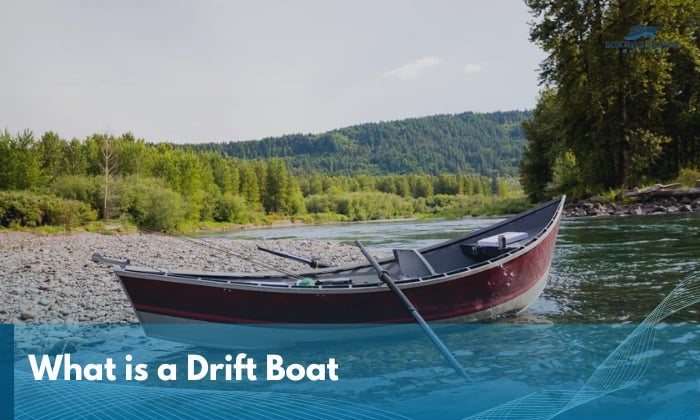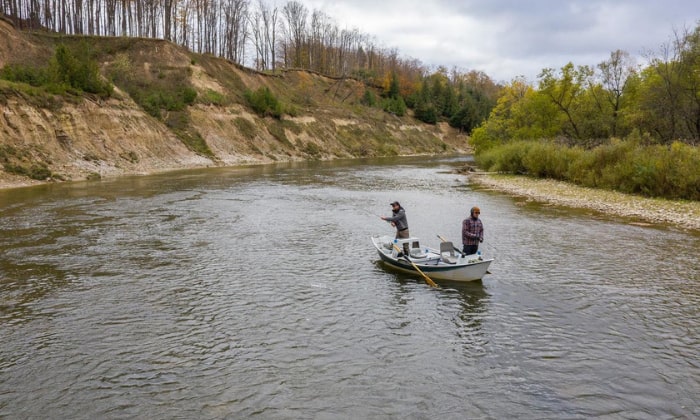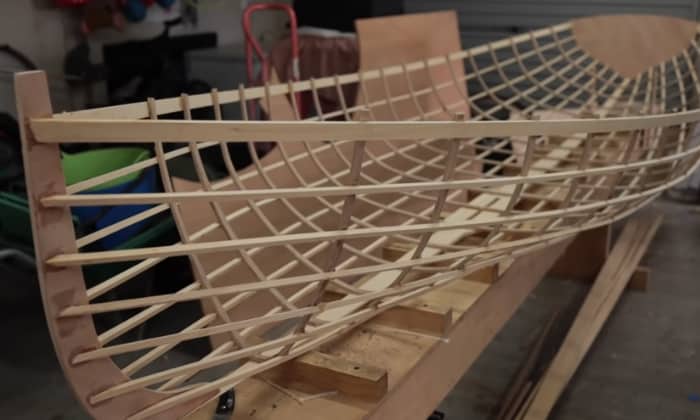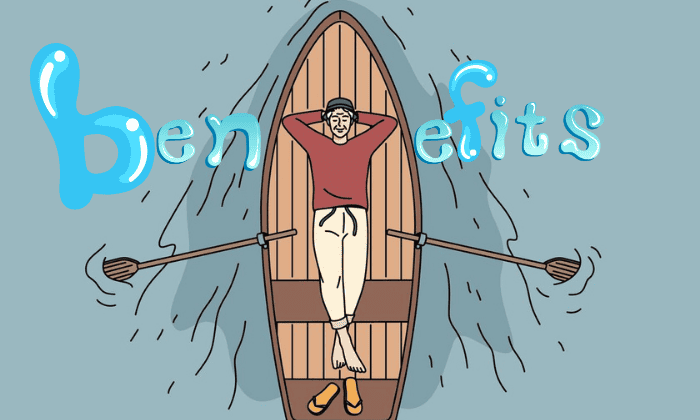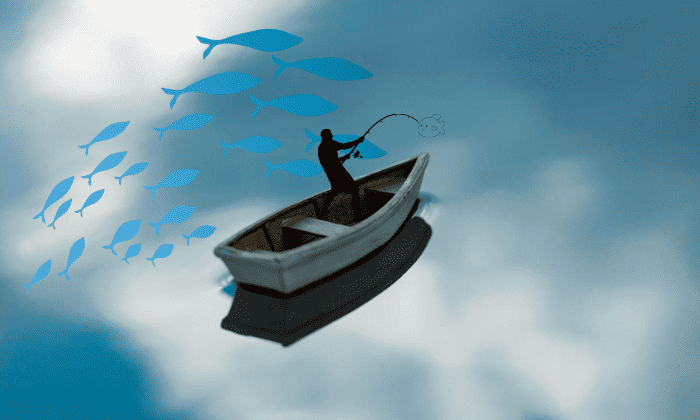There are certain types of boats that are solely associated with a specific niche. For a drift boat, it’s fly fishing. That’s why there’s no better person to ask, “What is a drift boat?” than someone who likes that fun angling activity.
A drift boat is a rowboat that’s designed to drift downstream with the natural flow of the water. All the while, anglers onboard cast their baits, and the vessel’s natural movement allows them to cover larger stretches of water.
Table of Contents
Understanding Drift Boats
The full drifting boat meaning can be derived from how this vessel mainly functions. It’s a watercraft that depends mainly on the current to dictate its movement.
But what are the oars used for? For controlling direction and speed – not propulsion. This responsibility usually falls in the hands of an assigned guide or rower. Their role is extremely vital, especially in areas with plenty of rocks and other debris or rapids.
Most drift boats are made of aluminum, fiberglass, and wood. They’re flat-bottomed, allowing the hull access to shallow water where some fish might concentrate.
The closest comparison to it is your standard Jon boat, with the clear exception of a drift boat’s ability to handle choppier waters easier, all thanks to the curved bow.
As you can see, your average fishing drift boat is all about ensuring optimal mobility and accessibility when trying to catch fish in inland waters.
If you prefer boating in a river to wading when fly fishing, I can safely say that you prioritize practicality more – and that’s arguably what drift boats were primarily made for.
Drift Boat Construction and Features
It’s worth looking at how these vessels are constructed and the features they integrate to have a well-rounded drift boat definition. Hang around in various fishing circles for a while, and you’ll likely hear the term “dory boat” being thrown around.
Some will say that a drift boat is a variation of a dory boat, with a few stating that there’s no difference between the two. Compact and shallow-drafted, dory boats also sport the sharp, curved bows you can see in many drift boats.
This is not a coincidence since, technically, a drift boat is a type of open-water dory – though we have to make it clear that not all dories are drift boats.
Drift boats set themselves apart with the following construction characteristics:
- Besides being flat-bottomed, they have widened hulls with outward curving sides.
- Their bows are narrow, pointed, and flat with an equally tapered stern at the other end.
- They’re not decked, meaning there’s no closed top, which makes them bad at getting rid of water that floods in.
Most of these features aid in keeping the vessel stable and highly maneuverable in moving water – although, of course, it’s not without its weaknesses.
- Pedestal seats are built to accommodate the guide and rower, but they can also be used to sit on as you wait for a bite or two.
- Of course, it’s not a rowboat without foot braces and oars.
- We also can’t forget about the integrated anchoring system, which is often side-based or floor-based.
Some drift boats are designed with gunnels that help to keep the boat’s shape, but also for passengers to sit on or put some of their gear for fishing. Others will be outfitted with rod racks for rod storage and other possible accessories and customizations the builder wishes to add.
Benefits of Using a Drift Boat
To completely understand why drift boats were invented and are popular among anglers, we need to look at the fishing hurdles they help overcome – besides the unique advantages they offer.
For one, they provide a better alternative to wade fishing, which oftentimes limits your reach and areas you can access.
- With a drift boat, you have more opportunities to explore and look for potential honey holes, which you’re more likely to miss if you’re just wading through the water—greater coverage, in short.
- Not all areas in various inland waterways are accessible solely by foot. With an ideal drift boat, you can smoothly overcome this bump.
- There’s also the fact that it’s much more tricky to transition between runs and riffles without a drift boat.
- Most people take the opportunity to master their rowing skills while they help their buddies fish and share their knowledge of prime fishing spots.
- A drift boat with a motor is entirely plausible, especially if you can’t or don’t want to row presently, but it’s recommended to use low-horsepower trolling motors for them – just enough to simulate the same thrust and propulsion when rowing.
- Another sub-type such as the inflatable drift boat can offer better strength, stability, and overall reliability. It’s also often designed to keep weight down, boosting efficiency.
The Uses of Drift Boats
While I can definitely say that rafts are more versatile than drift boats, we can’t completely cross out the relative adaptability of the latter. These are all the confirmed uses of these nifty watercraft.
- They’re excellent options for general river fishing and fly fishing. Feel free to combine wading and drifting if the water’s shallow enough if you’re like me, who can’t sacrifice the inherent “intimacy” of wade fishing.
- They’re at their best on good, calm water. You may have to consider something more practical like a raft if you’re up against big waves and exposed rocks.
- The plethora of accessories and tools drift boats can accommodate makes your trip and fishing endeavors more comfortable.
- They can also be used to explore remote areas, assuming the weather and waters are cooperating. Would you willingly say no to a pleasant drift and sightseeing trip downstream where you can also look for more secluded fishing spots?
- They’re a great choice for anglers who want to be able to quickly move from one fishing spot to another. If you think you’re wasting precious time by solely wading, then these boats are basically made for you.
- Learning how to use a drift boat is synonymous with learning how to row a boat. I’ve lost count of the number of times I asked a buddy or two to let me steer their drift vessel to practice my rowing skills.
So, yes, a drift boat not only boosts your fishing skills but your rowing techniques as well. It has the potential to make you a more complete boater, in short, and I don’t know about you, but I’ll grab that opportunity any day.
Conclusion
Overall, the best answer to “What is a drift boat?” is that it’s a highly specialized vessel that performs best in certain conditions. Its design calls to mind a charming, classical aesthetic (especially if we’re talking about the wooden boats out there).
But it’s clear upon close inspection that most of a drift boat is meant to ensure optimal movement on the water and just beautiful fishing. Wade fishing will always have its own appeal, but we can’t deny that a drift boat makes life much easier.

“My intention from the first day establishing Boating Basics Online is to provide as much help as possible for boaters who want to experience a first safe and convenient trip. So feel free to join us and share your beautiful journeys to the sea!”

